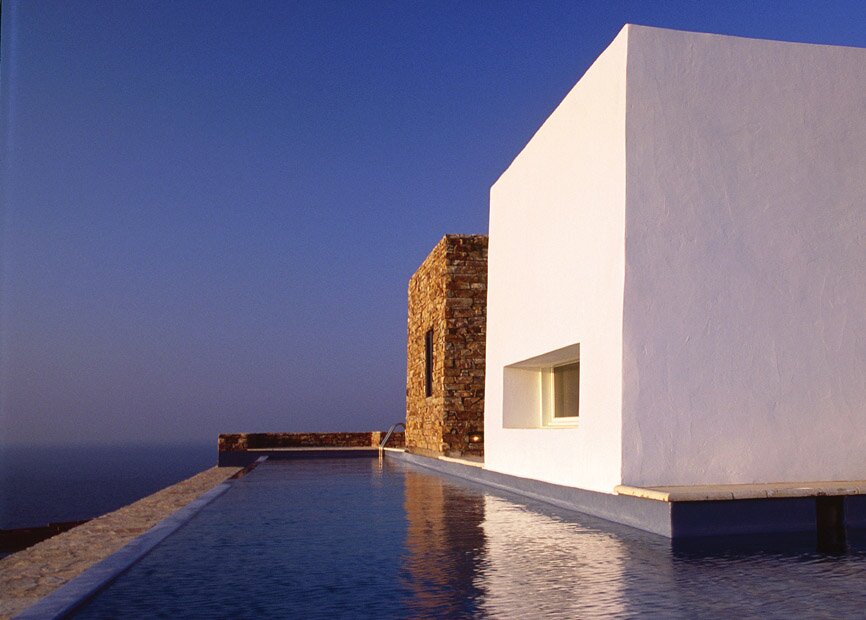ar+d
Emerging Architecture Awards
Deca Architecture
House
Antiparos, Greece
December 2004

|

|

|
As a basic strategy, the plan was dug into the hillside, forming a mythical crater protected from the Meltemi by the tallest part of the complex, a three-storey building of local rubble in effect a small tower containing bed and guest rooms. The top of this stone building is practically the only part of the new house that can be seen from the village. To the south is a separate rectangular white rendered block that houses kitchen, dining and communal areas. On the west side is a thin 25m long swimming pool that hovers over the slope. Where the water ripples over the pools western edge, the place offers swimmers the illusion of being in a displaced piece of the sea that has been raised up the hill. Pool and buildings define courts forming the Krater. They are outlined against the landscape by stairs and retaining walls beautifully made in traditionally laid squared rubble.
Down the slope to the west is a guest house, the route to which goes under the pool and is carved into the slope, with walls forming a garden for traditional local plants. At night, the illuminated path is intended to look like a lava flow. The little building consists of two enclosed spaces with an open court between them; one of the rooms is dug into the hillside; the other is the only part of the complex, apart from the top of the stone building, that can be seen from the village.
The jury respected the care with which the house has been adjusted and carved into the landscape, and the ways in which traditional craftsmanship and placemaking have been reinterpreted.
Architect
Deca Architecture
Photographs
Kyle Gudsell